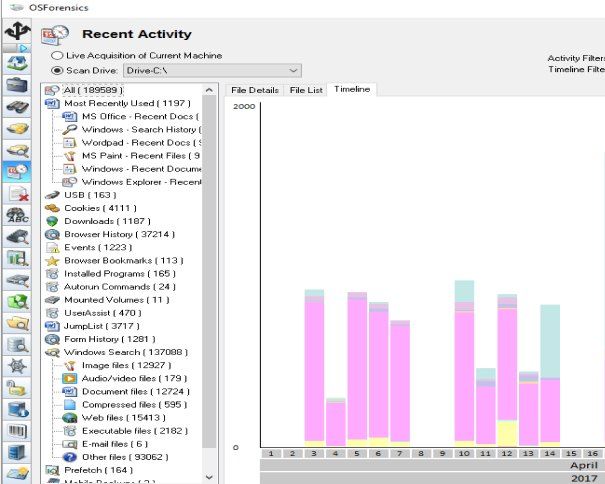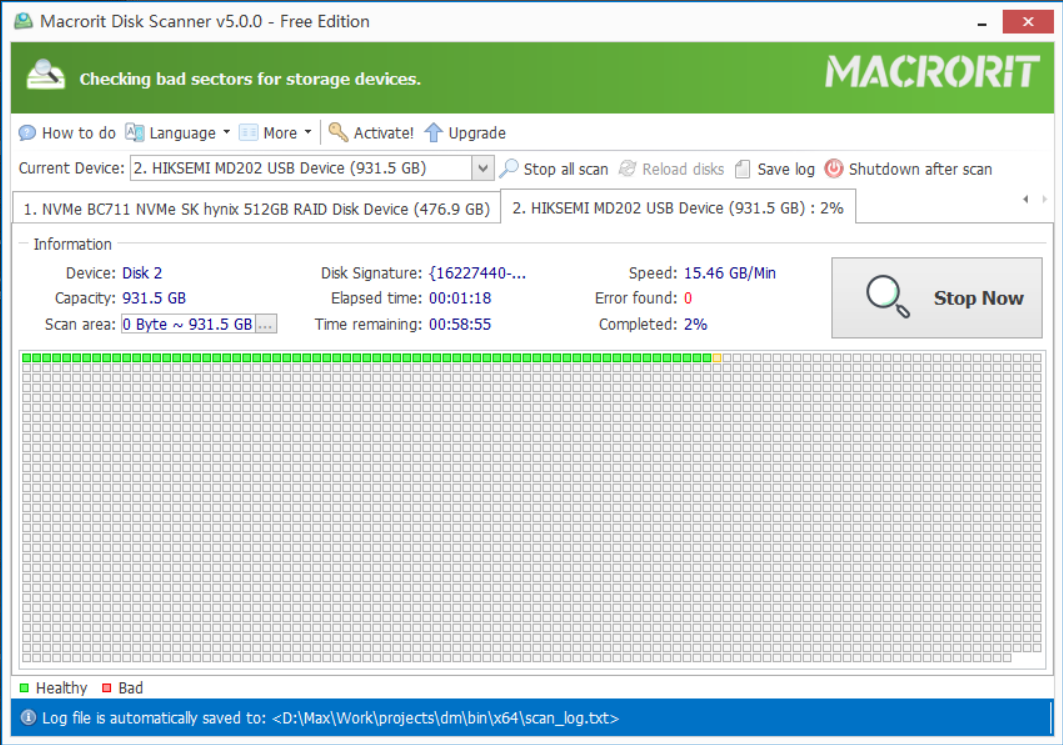-
Program Measure Hard Drive Speed카테고리 없음 2020. 3. 5. 21:39
One of the most important hardware components inside your computer is obviously the drive that holds the operating system. If you have Windows installed on a slow hard drive, it doesn’t matter how powerful the other are, the system will boot slower, load programs more slowly, and lag quite badly while multitasking.This is a reason why high performance hard drives and especially SSD’s are so popular these days. It’s because upgrading just that one part can breath new life into a computer and make it feel a lot more snappy to use.
The actual hard disk or SSD performance under Windows is determined by several factors so how do you know, needs tweaking or is even holding the system back? Thankfully, the internet is full of websites to show you how well nearly every drive around can perform.
Also, loads of programs are available that can give your hardware a performance test to see how well it’s doing. There are many paid suites around like PCMark or Passmark that can test the whole system, but here we list for you 10 free tools that are specifically designed for testing the performance of hard drives and SSD drives.All tools were tested on Windows 10 64-bit and are also compatible with Windows 7 and 8.1. CrystalDiskMarkThis is a very popular storage benchmarking tool because it’s versatile and can produce good results for just about everything from USB drives, to memory cards, SSD drives and mechanical hard drives.

Program Measure Hard Drive Speed 5400 Vs 7200
CrystalDiskMark is very easy to operate too, just set the test size between 50MB and 4GB, the drive to test and the number of passes to run. More passes obviously should produce more accurate results.Then click All to run a full test or any individual colored buttons below to run single tests. A useful extra option for SSD drives is whether to fill the test data randomly or with 0’s or 1’s. This will affect the results on drives with hardware compression such as those with Sandforce controllers. Portable, installer and custom skin versions are available.2. ATTO Disk BenchmarkATTO Disk Benchmark is a popular portable tool used by many hardware review websites and is also recommended by manufacturers such as Corsair to run speed tests on SSD drives.
All the tests are sequential and are taken for read and write operations using block sizes of 512 bytes up to 64MB. A test file length of between 64KB and 32GB is also available, both are selectable from drop down menus.Leaving Direct I/O enabled will rule out odd results due to any system caching. An I/O size of over a couple of Megabytes will produce virtually the same scores so probably isn’t needed for many users. Results can be saved out and loaded again at a later time. A look around the internet will likely find someone else who has posted ATTO results for similar hardware to your own.(via Softpedia, the official site requires filling a form)3. AS SSD BenchmarkAS SSD looks a bit like CrystalDiskMark and is designed primarily to benchmark SSD drives.
It is another popular tool being used by hardware sites such as (which also includes ATTO) to show their results. The program uses incompressible data so some SSD’s will show much lower scores than usual if they compress their data.Sequential and 4KB read and write scores will be shown along with access times and a final general overall score. The results can be changed to IOPS if you prefer from the View menu. A couple of useful additional benchmarks are available in the Tools menu like a Copy benchmark which simulates copying an ISO, game and a program, and also a read/write compression benchmark. AS SSD is also completely portable.(website is in German, download link at bottom)4. Anvil’s Storage UtilitiesFor an SSD or hard drive benchmark and test utility that really puts drives through their paces, they don’t come much more comprehensive than Anvil’s Storage Utilities. While being able to perform a complete read and write test using sequential and random operations, it displays a full set of results including response time, speed in MB/s and also IOPS (Input/Output Operations Per Second).A total combined read/write score is shown in the yellow box.
Also included are 3 extra IOPS tests, an endurance testing function and the ability in the settings to alter the amount of compression to use on the test file. More functions like a system information tab and a screenshot saver round off an impressive tool. Anvil’s Storage Utilities doesn’t seem to be developed anymore and the last version is from 2014.5. HD TuneHD Tune is probably the most well known and will likely be in every tech users USB toolkit. The free version 2.55 is getting old now having not been updated since 2008 and might have minor issues with some of the latest hard drive models. Some functions like error checking and benchmarking should still work fine.After a test, the benchmark result graph will show the minimum, maximum and average read speed along with the average access time in milliseconds and the burst rate. The block size can be changed in the options from 512 bytes up to 8MB and a slider can move between faster less accurate or slower more accurate test speeds.

Bad sectors are usually a sign that your drive is starting to fail. If you have a high number of bad or pending sectors it is highly recommended that you replace the drive rather than attempt to repair it.WD Data Lifeguard is a free disk diagnostic tool from Western Digital.
It can run a “basic test” (checking SMART info), an “extended test” (full scan that locates bad sectors), or completely wipe the drive.If bad sectors are found during an extended test, you will be given an option to attempt to repair these sectors. However, like I said above, it is recommended that you replace a failing drive.You can also use CrystalDiskInfo (from the makers of CrystalDiskMark) to display SMART information and monitor drive health in real time. CDI once saved me from having to pay for expensive data recovery by showing an alarm for pending sectors before my drive died 2 days later. Defrag on a HDD, from Win 7+, it run Optimize, which is the trim command.
This is very important. Simple.An HDD is seperate into block and then into pages.
It can only do 3 operations on block: Read, Write and Erase. It cannot overwrite like a hard disk. But it function the same way: When you delete something, it marks the pages related to these data as available, but not empty. A problem though, on page, it can only do Read and Write, not erase.When you have to erase a page because you run out of empty page, the ssd controller must copy all the good page in cache from the block (Read action + write action in the SSD cache), erase the block so all pages are empty and write back the good page from the cache. This operation take time and this is way your SSD speed degrate with usage.Thus, in the early days of SSD, Trim appeared to fix this problem. When Trim is run, it does the operation above on all needed block and pages, thus leaving the SSD only with good and empty pages. This process does add some wear on the drive, but very little.With time, OS and controller have implemented various way to bypass this problem, like doing the trim action on each erase, never leaving bad pages.More and reference at: anandtech.com/show/2738/8.
Blackmagic Disk Speed Test Windows 10

I did not see Hard Disk Sentential among your programs. I’ve been using it for years now.3 years back it told me the bad sectors of the 750GB hard disk in my Dell 545 Inspiron had increased and its performance had dropped to 80%.The system was still under warranty so I contacted Dell.
After a lengthy phone call discussing the problem, they a sent a technician out. After 90 minutes, he agreed the drive was problematic, and gave me a 1TB replacement drive.I installed the new drive, made it the boot and moved everything important over to it.I made the 750GB drive a secondary just to see how long it might last. About one week later it failed.I am sure those programs you list are great but I am thankful Hard Disk Sentential was recommended to me and have it on all of our computers.